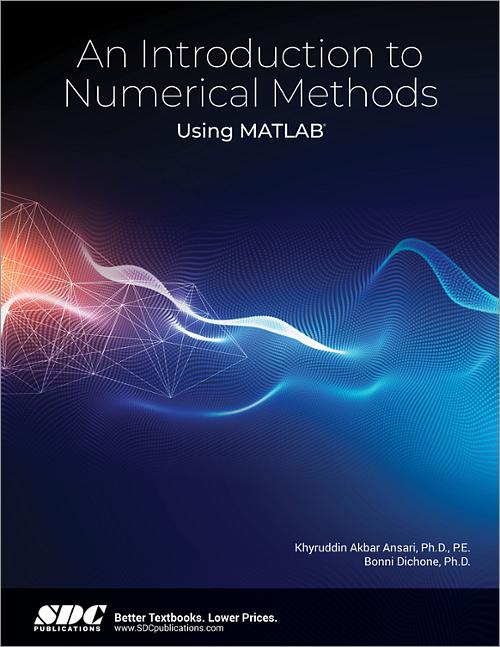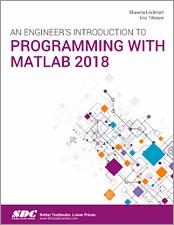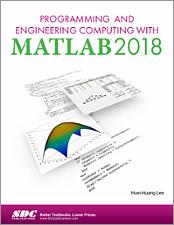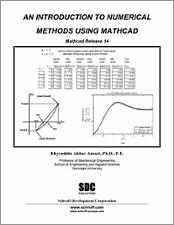An Introduction to Numerical Methods Using MATLAB
- Description
- Contents
- Instructor Resources
- Details
Description
Key Features
- Designed to be used in any introductory level numerical methods course
- Covers numerical methods while demonstrating the applicability of MATLAB to problem solving
- Uses MATLAB to provide powerful tools in the solution of numerical problems
- Contains MATLAB shortcuts and alternatives to otherwise long and tedious numerical solutions
- Intended for students with a background in calculus, elementary differential equations and some linear algebra
In Detail
An Introduction to Numerical Methods using MATLAB is designed to be used in any introductory level numerical methods course. It provides excellent coverage of numerical methods while simultaneously demonstrating the general applicability of MATLAB to problem solving. This textbook also provides a reliable source of reference material to practicing engineers, scientists, and students in other junior and senior-level courses where MATLAB can be effectively utilized as a software tool in problem solving.
The principal goal of this book is to furnish the background needed to generate numerical solutions to a variety of problems. Specific applications involving root-finding, interpolation, curve-fitting, matrices, derivatives, integrals and differential equations are discussed and the broad applicability of MATLAB demonstrated.
This book employs MATLAB as the software and programming environment and provides the user with powerful tools in the solution of numerical problems. Although this book is not meant to be an exhaustive treatise on MATLAB, MATLAB solutions to problems are systematically developed and included throughout the book. MATLAB files and scripts are generated, and examples showing the applicability and use of MATLAB are presented throughout the book. Wherever appropriate, the use of MATLAB functions offering shortcuts and alternatives to otherwise long and tedious numerical solutions is also demonstrated.
At the end of every chapter a set of problems is included covering the material presented. A solutions manual to these exercises is available to instructors.
Prerequisites
The material contained in this book should be easily grasped by students with a background in calculus, elementary differential equations and some linear algebra, and, when utilized in a mathematics, science, engineering, computer science or engineering technology course sequence, it should give a good basic coverage of numerical methods while simultaneously demonstrating the general applicability of MATLAB to problem solving.
Chapter Descriptions
Chapter 1 discusses MATLAB basics while chapter 2 gives a general introduction to numerical methods in science and engineering and presents the computation of numerical errors along with the Taylor series as a basis of approximation in numerical analysis.
Chapter 3 offers a coverage of the popular methods of finding roots of equations such as Bisection, Newton- Raphson, Secant and Iteration. Solutions to systems of nonlinear algebraic equations obtained by the iteration method are also presented. The applicability of root-finding to practical problems such as those that occur in column design and control system analysis is demonstrated.
In chapter 4, matrices and linear algebra are dealt with along with the solution of eigenvalue problems. Applications to the field of vibration engineering and stress analysis are also discussed.
Chapters 5 and 6 focus on numerical interpolation and curve-fitting respectively. The common techniques of interpolation and the functions generally resorted to in engineering for curve-fitting of data are covered quite thoroughly. The applicability of these to the analysis of scientific and engineering data such as stress-strain, load-deflection and fatigue failure is presented.
Chapters 7 and 8 address numerical differentiation and integration. The concept of finite differences is introduced and the common methods of differentiation and integration, such as the interpolating polynomial method, trapezoidal and Simpson’s rules and Romberg integration are covered. Applications of numerical differentiation and integration such as determination of velocities and accelerations from given displacement data and computation of the moment of inertia of a cross section are included.
The last chapter, chapter 9, deals with coverage of numerical solution of ordinary differential equations, and although it does not discuss each and every technique that is available, it does focus on the popular ones such as Taylor series method, Euler, modified Euler and Runge-Kutta methods. A variety of practical applications of numerical procedures is included in this chapter, ranging from the response of an electric circuit to an input voltage to the effect of damping on the response of a control system.
Table of Contents
- Basics of MATLAB
- Introduction to Numerical Methods
- Roots Of Equations
- Matrices and Linear Algebra
- Numerical Interpolation
- Curve Fitting
- Numerical Differentiation
- Numerical Integration
- Numerical Solution of Ordinary Differential Equations
References
Index
Instructor Resources
The following downloadable resources require that you are registered, logged in and have been authenticated as an instructor.
Product Details
| Publisher | SDC Publications |
| Authors | K. Akbar Ansari Ph.D., P.E., Bonni Dichone Ph.D. |
| Published | January 7, 2019 |
| User Level | Beginner |
| Pages | 368 |
| Binding | Paperback |
| Printing | Black and White |
| Print ISBN | 978-1-63057-245-7 |
| Print ISBN 10 | 1630572454 |
| eBook ISBN | 978-1-63056-498-8 |



